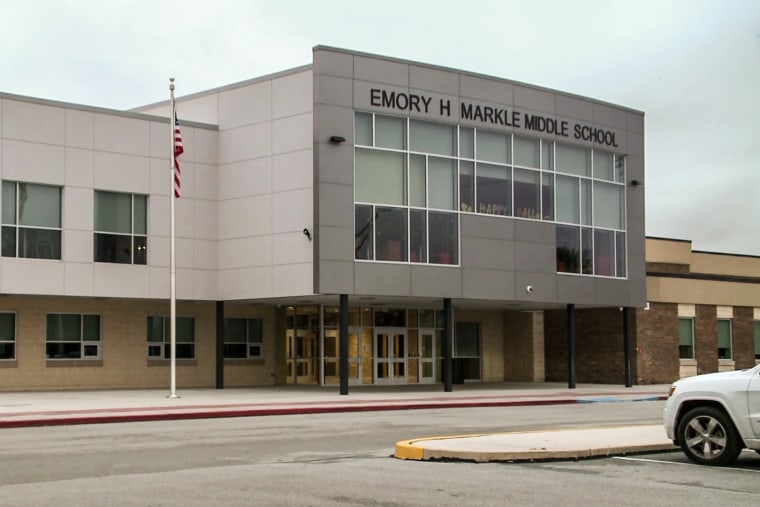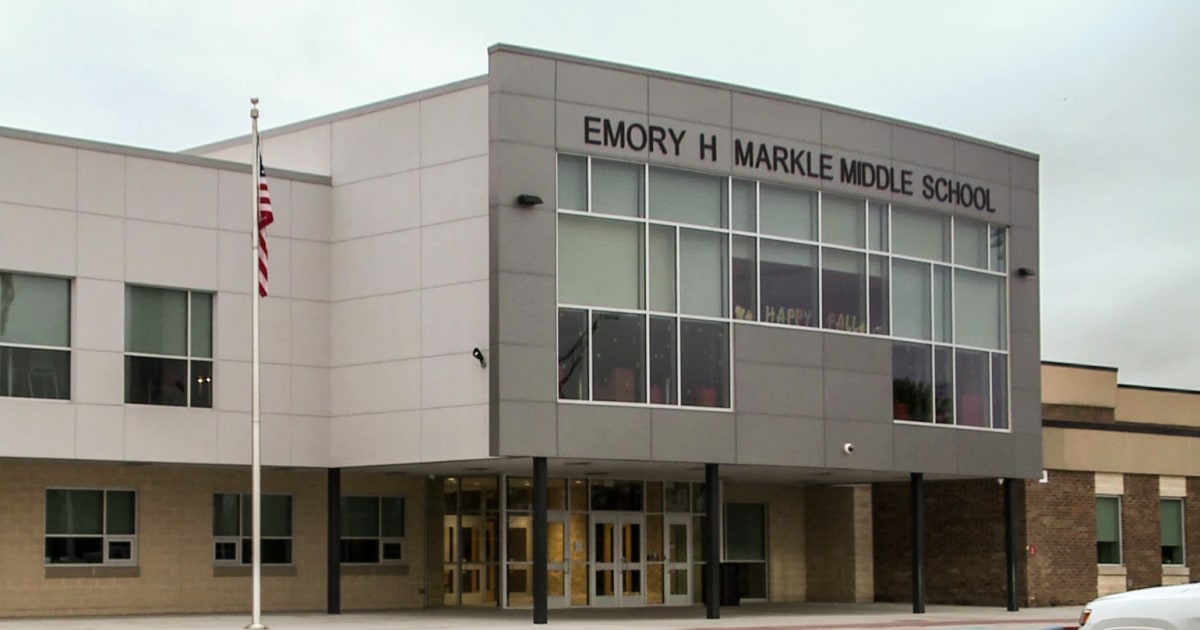A Pennsylvania middle school installed a window in its gender-inclusive restroom, making its interior visible from the school hallway.
The window was constructed at Emory H. Markle Middle School in Hanover, Pennsylvania, which is roughly 5 miles north of the Maryland border. Gender-inclusive bathrooms are commonly used by transgender and nonbinary people for privacy and safety reasons.
Matthew Gelazela, the board president of the South Western School District, said the district decided to add the window as it “engages in renovating multiuser restroom facilities.”
“It has an interest in opening a view into the non-private area of those facilities in similar fashion to what has existed for years in our elementary schools,” Gelazela said in a statement to NBC affiliate WGAL in Lancaster. “In making the area outside of stalls more viewable, we are better able to monitor for a multitude of prohibited activities such as any possible vaping, drug use, bullying or absenteeism.”

Gelazela added that the window does not provide a “view into those private stall spaces from outside of the restrooms.”
The district did not immediately respond to NBC News’ request for additional comment.
The window installation raised concerns among some of the students’ parents, who said windows were not added to the school’s single-sex multiuser restrooms.
Jennifer Holahan, whose son attends school in the district , said the new window is a “deterrent” to keep students from using the restrooms and a way to single out LGBTQ students who may be more likely to use a gender-inclusive facility.
“I can understand needing to have supervision over middle and high school students, especially in the bathrooms. I was a teenager once; I know it’s a tough spot,” Holahan told WGAL. “But I also think windows aren’t a solution. I think if it was a real issue, it wouldn’t just be gender-inclusive restrooms.”

The American Civil Liberties Union of Pennsylvania condemned the installation of the window, calling it “discriminatory.”
“Schools should be a welcoming and safe environment that nurture students’ curiosity and well-being,” a spokesperson for the group said in an email. “Discriminatory policies like this one not only undermine those goals, they also make students less safe.”
The issue over whether trans people should be able to use the restroom that aligns with their lived gender has played out in the U.S. for roughly a decade. A transgender “bathroom ban” in North Carolina — which barred trans people from using restrooms and changing facilities that matched their gender identity in most public spaces — caused a national uproar in 2016. (The North Carolina law, HB 2, was partially repealed in 2017.) However, similar laws have rebounded in recent years with legislative success and more muted opposition.
Thirteen states across the country have laws that prohibit transgender people from using bathrooms and facilities consistent with their gender identity in K-12 schools, according to the Movement Advancement Project, an LGBTQ think tank. Some of those state laws — also known as “bathroom bans” — also bar trans people from using restrooms that correspond with their gender identities in some or all government buildings.

Leave a Reply